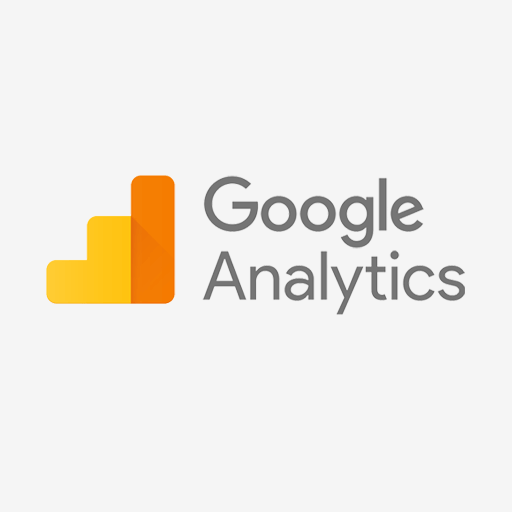In today’s big data world, analytics plays a crucial factor in gaining powerful insights and staying competitive. Two tools that enable you to view and keep track of these analytics are Google Analytics and Hubspot. Although these tools provide different insights when integrated, they not only streamline workflows and enhance data analysis but also provide a seamless and personalized customer experience. Combining these insights is also a game-changer for businesses as it can derive actionable insights and improve their return on investment.
Table of Contents
What is Google Analytics?

Google Analytics has grown to be everyone’s number one analytics tool. While a lot of attraction stays on the free rendition of the tool, it is fair to say that it has many features for analytics insights.
You can access real-time reports on how your website interacts. Especially if you’re privy to using data with HubSpot, certain marketing analytics can be truly insightful. Google Analytics is widely used for analyzing dynamic data trends with prompt details, such as the count of active audiences, website traffic based on geographical locations, and other details that can be significant for effective marketing.
What is HubSpot?
HubSpot is a full-service platform that offers features for marketing, sales, customer service and other forms of data handling and management. Apart from being free of cost and void of the requirement of any technical setup or contract, HubSpot is a great software to cater to different marketing aspects for businesses.
In addition to this, there are tools for content management, social media marketing, search engine optimization, and website analytics. It also integrates with a variety of other platforms for improved functionality.
Hevo Data simplifies your data integration journey by supporting both Google Analytics and HubSpot as sources. With Hevo’s no-code platform, you can effortlessly connect these tools to your preferred destinations and data warehouses, ensuring real-time data flow and actionable insights.
Check out what makes Hevo amazing:
- It has a highly interactive UI that is easy to use.
- It streamlines your data integration task and allows you to scale horizontally.
- The Hevo team is available around the clock to provide exceptional support to you.
Join thousands of users who trust Hevo for seamless data integration, rated 4.7 on Capterra for its ease and performance.
Get Started with Hevo for FreeAdding Google Analytics tracking code to HubSpot
Step1. Sign in to your HubSpot account.
Step2 . Click the settings gear icon on the top toolbar.
Step 3. On the left side panel, click “Website.”
Step 4. Select “Pages” from the “Website” dropdown menu.
Step 5. Choose a domain from the “Choose a domain to edit its settings” dropdown menu.
Step 6. Click on the “Integrations” tab below the dropdown menu.
Step 7. Check the “Integrate with Google Analytics 4” checkbox.
Step 8. In the box provided, enter your Google tag ID (Measurement ID starting with “G -“).
Step 9. Click “Save.”
Tips for Data Consistency between Google and Hubspot
- Use UTM Tracking Parameters: It can’t be emphasized enough the importance of using consistent UTM naming standards for all links you establish that bring visitors back to your web pages. This will ensure that data is consistently grouped across Google and Hubspot, ensuring that Google Analytics Channel reporting and Hubspot Source reporting are more closely aligned. UTM tracking settings are very crucial for email marketing, social media marketing, and display advertising.
- Set up a Paid Social Channel in Google Analytics: Hubspot already has a Paid Social “Source”, and in Google Analytics, you can establish a custom channel grouping for Paid Social to track your social advertising efforts apart from organic social efforts. This will assist in guaranteeing that your Google Analytics Channel report and your Hubspot Sources report are more closely aligned.
- Use UTM Parameters for Non-Paid Search Advertising: Hubspot lacks a ‘Display‘ source to aggregate traffic from paid sources other than “Paid search.” It is recommended that you choose Medium = Display, which will aggregate the traffic into Hubspot under ‘Other Campaigns’.
Conclusion
In this blog, we explored multiple benefits of using HubSpot in tandem with Google Analytics and provided you with two step-by-step methods of integrating these tools. You can choose the method that suits your company the best by keeping in mind the nature of your data. To get the ease with working on different Google Analytics Dashboards, you can check out this Google Analytics Dashboard guide.
To streamline your data integration and make the most of both platforms, consider Hevo Data for an effortless, no-code solution. Connect with us today to improve your data management experience and achieve more with your data.
Sign up for a 14-day free trial with Hevo and streamline your data integration. Also, check out Hevo’s pricing page for a better understanding of the plans.
FAQs
1. Can Google Analytics integrate with HubSpot?
Yes, Google Analytics integrates with HubSpot. You can track website traffic and user behavior by adding Google Analytics tracking codes to HubSpot pages or using HubSpot’s integration settings.
2. Is Google Analytics being phased out?
Yes, Universal Analytics is being phased out and replaced by Google Analytics 4 (GA4).
3. What is the difference between HubSpot analytics and Google Analytics?
HubSpot analytics focuses on marketing and sales data, like lead tracking and campaign performance, while Google Analytics provides detailed website traffic and user behavior insights.










